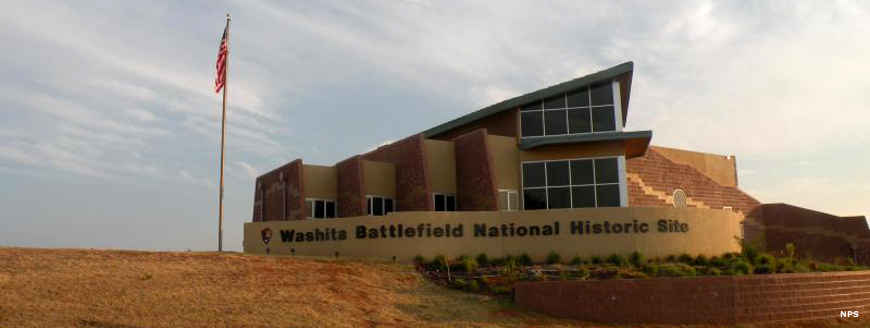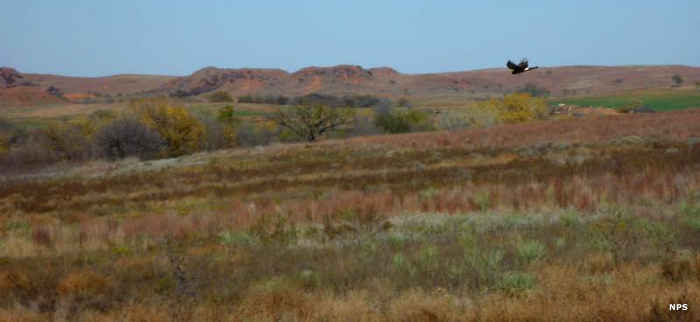Washita Battlefield National Historic Site

The Native Garden at Washita Battlefield National Historic Site

Washita Battlefield National Historic Site preserves and protects a site where the peaceful village of Chief Black Kettle and his Cheyenne were attacked at dawn by Lt. Colonel George Armstrong Custer and the 7th Cavalry on Nov. 27, 1868. Despite the Cheyenne being armed it was a decidedly one-sided battle in the foot-deep snow. One reason why it was one-sided was the Cheyenne were on their way to a reservation set aside for them in Indian Territory and they never thought the US Army would attack them because the majority of them were following Black Kettle's lead in working for peace. Some of Black Kettle's tribe had already survived the massacre at Sand Creek four years before but most of those did not survive the fighting at Washita. Black Kettle himself was shot in the back as he tried to flee on a pony with his wife.
Custer was most likely trying to make a name for himself in taking the action he did. However, once the shooting stopped he realized where he was and who else might be close in the neighborhood and he became afraid: there were several other major Native American encampments within a couple miles and bands of warriors could be seen gathering on nearby hilltops, getting redy to charge. Custer ordered his men to round up the unharmed women and children and kill all the wounded. They destroyed everything they didn't want or couldn't carry and killed almost 700 of the tribes' horses, keeping about 200 to carry prisoners and loot.
During the fighting Major Joel Elliot had taken 20 men and rode off in pursuit of a group of fleeing Cheyenne, getting separated from the main mass of soldiers. Whatever happened to them (they'd run into a group of warriors from a nearby encampment and were killed about a mile from Black Kettle's village), Custer never went looking for them: he abandoned them on the field. The shadow of that hung over him even into the investigation of what happened at the Little Bighorn 8 years later, not that he survived that incident.
Near nightfall Custer had some of his men lead feints at groups of warriors gathering nearby and when those warriors retreated, Custer and his men ran for the cover of Camp Supply in the dark. As historian Larry Sklenar noted: "Custer probably could not have pulled off this tactical coup [at the Washita] had he not had in his possession the fifty-some women and children captives. Although not hostages in the narrowest meaning of the word, doubtlessly it occurred to Custer that the family-oriented [Cheyenne] warriors would not attack the Seventh [Cavalry] with the women and children marching in [the middle of his column]." And the warriors, fearful of an errant bullet killing one of their own, did not attack.
Historians are still debating the extent of casualties at Washita but one thing is clear: the soldiers had ridden through the camp shooting men, women and children indiscriminately. The 50-some captives they took were physically unharmed women and children (the soldiers had killed all the men they could find, and killed all the Cheyenne wounded) and they were used essentially as human shields to protect the 7th Cavalry retreat. After Washita, several other US Army commanders learned Custer's method and applied it in several similar situations across the West. To be fair to Custer, his orders had come directly from General Philip Sheridan: "…to destroy [Indian] villages and ponies, to kill or hang all warriors, and to bring back all woman and children [survivors]." In the end, the Seventh lost 21 men killed and a dozen wounded. 20 of those men died with Major Elliot. Estimates of Native American casualties range from 50 to almost 300. The interpretation signage on site says "103 killed" (and there were no wounded as the soldiers went around and methodically killed all the wounded when the shooting was over).
There were many Anglos who celebrated the victory over the savages at Washita but there were (and are) many others who decried the action as a massacre of peaceful Native Americans who were traveling to their newly granted reservation in nearby Indian Territory. The Cheyenne and Arapaho are still petitioning Congress to change the name of the site to reflect what truly happened: a massacre of peaceful (but non-Anglo) men, women and children.
The upper photo on this page is of the Washita Native Garden: a healing project where Cheyenne and Arapaho elders and medicine men have designed and planted a garden of 21 native plants they use for spiritual and medicinal purposes. The Garden is laid out in the traditional Medicine Wheel configuration, a design that holds deep spiritual and astrological significance to many Native American tribes.
The Washita Battlefield Visitor Center is open 7 days a week from 8 am to 5 pm, closed for Thanksgiving, Christmas and New Year's Days. The trail and overlook are open daily from sunrise to sunset. There are no fees involved. Washita Battlefield is surrounded by Black Kettle National Grassland.

The Battlefield Visitor Center

A harrier hovering in the air above Washita Battlefield
Upper photo courtesy of Olivia Salmon
Other photos courtesy of the National Park Service